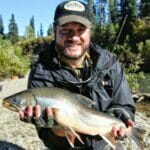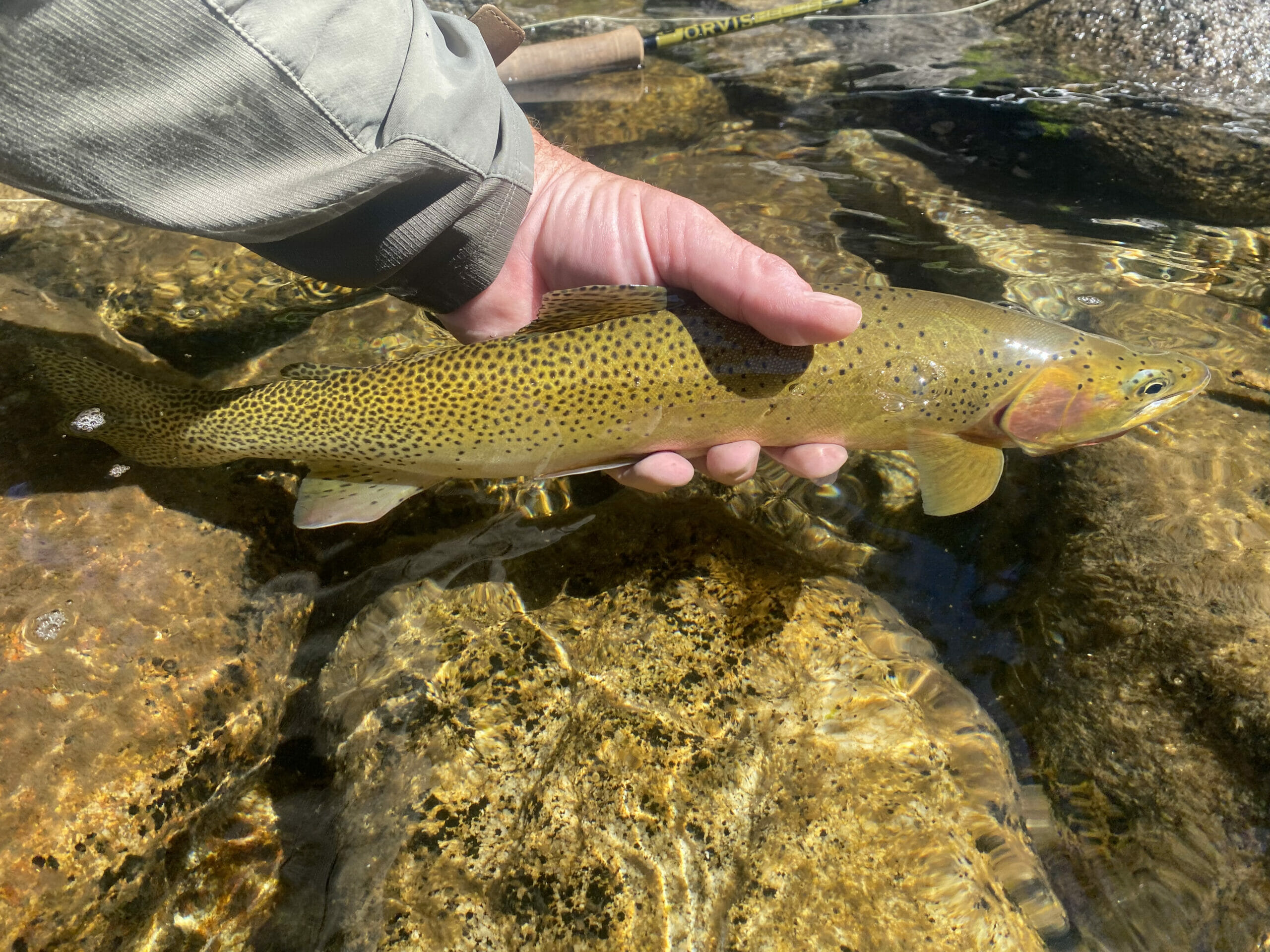Westslope cutthroat trout (Oncorhynchus clarkii lewisi)
Species Summary & Status: Officially designated as Montana’s state fish, the westslope cutthroat’s historical range included all of Montana west of the Continental Divide, as well as the upper Missouri River drainage. The average size of these fish is 6 to 16 inches, depending on habitat.
It is often difficult to distinguish the westslope from other cutthroat species, but it tends to have more small spots by the tail and none by the pectoral fin. Also, the westslope cutthroat trout is more of a silvery or greenish color than other cutthroats.
According to Behnke (2002), westslope cutthroat trout had the greatest area of distribution of all the subspecies of cutthroat trout. They were native to streams and lakes in the upper Columbia River basin of western Montana, northern and central Idaho, and southern British Columbia and Alberta; the upper Missouri River basin of Montana and northwest Wyoming; the upper South Saskatchewan River Basin of Montana and Alberta; the Methow River, Pend O’reille River and Lake Chelan drainages in Washington; and the John Day River drainage in Oregon. Westslope currently occupy about 33,500 miles (59 percent) of the nearly 56,500 miles of historical habitat.
Much of the habitat currently occupied by westslopes is located in designated parks (2 percent), wilderness areas (19 percent), and roadless areas (40 percent), and almost 70 percent of habitats currently occupied lie within federally managed lands. In addition, Westslope distribution has been expanded to non-historical areas through the trans-location and stocking of genetically pure populations into waters in the greater Columbia River basin.
Looking Forward: As with other cutthroat subspecies, the distribution and numbers of westslope have declined due to human-induced influences. As a result of livestock grazing and other agricultural practices, logging, road-building, mining, and dam construction, westslope habitat has been degraded and fragmented over time. Loss of riparian habitat, erosion, sedimentation and placement of barriers to fish migration and resultant decreased water quality from these activities have been identified as threats to most life stages of westslope. Competition from and predation by introduced salmonids and cool-water species of sportfish are also considered to be a key issue in the diminishment of westslope cutthoats. Genetic introgression with rainbow trout and other cutthroats; competition from nonnative species through stocking of sportfish; the potential for overexploitation from angling, and the incidence of fish diseases are potential concerns. Non-point pollution, sediment and runoff associated with urban development, reduced water flows from drought and habitat damage forest fires are growing concerns.
The introduction and subsequent spread of nonnative trout with their resultant adverse effects is considered by many fisheries scientists to be the major threat to westslopes. Many of the historic habitats of these cutthroat have been extensively colonized by introduced (stocked), nonnative fishes.
The inability to stop or reverse habitat degradation is one of the major obstacles to the continued improvement of the westslope status. Although, this concern is relieved somewhat by the fact that over 50 percent of current occupied westslope habitat is in roadless and wilderness areas. The westslope cutthroat status report and state conservation strategies identify water development, water withdrawal, livestock grazing, oil and gas energy development, mining, adverse forest management, and associated road building as significant continued habitat threats to westslope.
Two different conservation management strategies are needed and being implemented to conserve westslope. This twin-barreled approach recognizes the differences in conditions between the major westslope geographical management basins, i.e. the Columbia versus the Missouri. One strategy concentrates on preventing introgression, disease and competition risks through isolation (stopping the losses), while the other concentrates on connecting or re-connecting occupied habitats and populations to preserve meta-population function and multiple life history stages.
At present, there are multiple state, federal, tribal and private conservation efforts that are working to improve the status of westslope in the northwestern U.S. Projects have generally followed a site-specific/opportunity-based approach rather than a watershed approach, with varied results and accomplishments.
Between 2006 and 2020, the Western Native Trout Initiative contributed over $645,754 to 28 projects benefiting westslope cutthroat trout in Idaho, Oregon, Montana, and Washington. Projects have included a 2009 range-wide status assessment, numerous barrier removal efforts, as well as stream and riparian restoration and genetic assessments.
All Data Compiled From:
Western Native Trout Initiative



